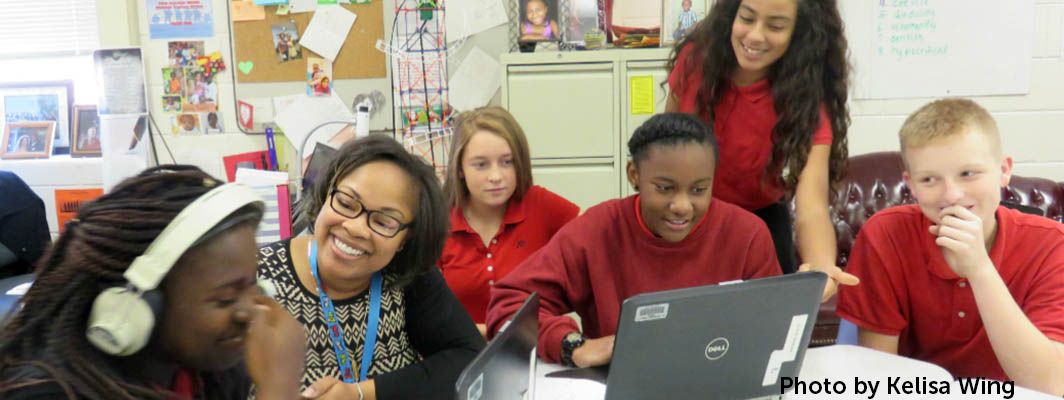What can I do in my position to change outcomes for kids?
As teachers, we don’t always have a say in decisions that are made in our buildings, the pacing for curriculum, or the content of a professional development day. But, we do have a lot of say about what happens within the walls of our classroom and whether or not ALL of our students feel welcome, safe, and successful. We have the power to address the biases that impact our students throughout the school day and work to resolve the stereotype threats our students face.
Researcher Gabrielle Rappolt-Schlichtmann describes stereotype threat as “the fear of being judged on the basis of negative stereotypes, and the fear of doing something that would confirm those stereotypes,” which can lead to reduced academic achievement and can affect students’ social-emotional well being.
Each of us have work to do to address the stereotype threats our students face, whether based on race, gender, learning difference, sexual orientation, or religion. We offer five strategies for doing this work in your classroom.
- Check YOUR bias at the door. In order to check our biases at the door, we must first admit that we actually have biases. We ALL have biases if we are truly honest with ourselves. The best way to identify our biases is by taking an inward look at ourselves and being honest about what we discover. Through this process, we can identify what the biases are and ensure they do not have a place in our classrooms.
- Create a welcoming environment free from bias in your discipline. As educators, we set the tone within our classrooms, and students act in the way that we allow them to. Creating an environment free from judgement and free from bias is the responsibility of every educator. This occurs through what is said and what is seen. Are you decorating your room in a manner that is representative of all cultures? Do you have a balanced visual representation of posters in your room that reflects both males and females? Is your student who uses a wheelchair able to easily navigate the classroom? Educators also should work towards learning about the backgrounds of their students so they understand students’ cultural and social norms.
- Be diverse in what you teach and read. Your classroom materials should be a mirror for your students in which they can see themselves represented. We also have to avoid the pitfall of teaching about the same historical people from various cultures as well (e.g., only focusing on Martin Luther King, Jr., or Harriet Tubman) when there are a wealth of diverse, historical and current people of color who we can choose to highlight. We need to push our own thinking in this area; even if our classrooms are not diverse, we should expose our students to multiple perspectives and people because it teaches them empathy and diversity. The NNSTOY Social Justice Book list is a great resource for building your classroom library.
- Honor multiple perspectives in your classroom. As a society, we have a tendency to only want to hear from those who agree with us. However, we need to foster an environment where students can hear from others who may not hold the same views as them, and we must allow them to feel safe in doing so. This could include building wonder walls or parking lots to encourage student questions, or allowing students the space to share ideas. And, it also includes exposing students to a variety of perspectives in their curriculum as well.
- Have courageous conversations. When we reflect on our biases and create safe spaces in our classrooms, we create opportunities for powerful conversations with our students. We are likely to have eye-opening, perspective shifting moments, and we also may make mistakes. Be human enough to admit them and correct them. Share with your colleagues what you are learning and help them shift their perspectives. Speak out in faculty meetings about inclusion, equity, and social justice and if necessary, challenge the status quo. Our kids need you and the adults in your building to have these conversations.
Here are some suggested resources to support your work in reducing stereotype threat:
And, here’s a list of some of the amazing people doing great work to combat stereotype threats in classrooms and schools:
